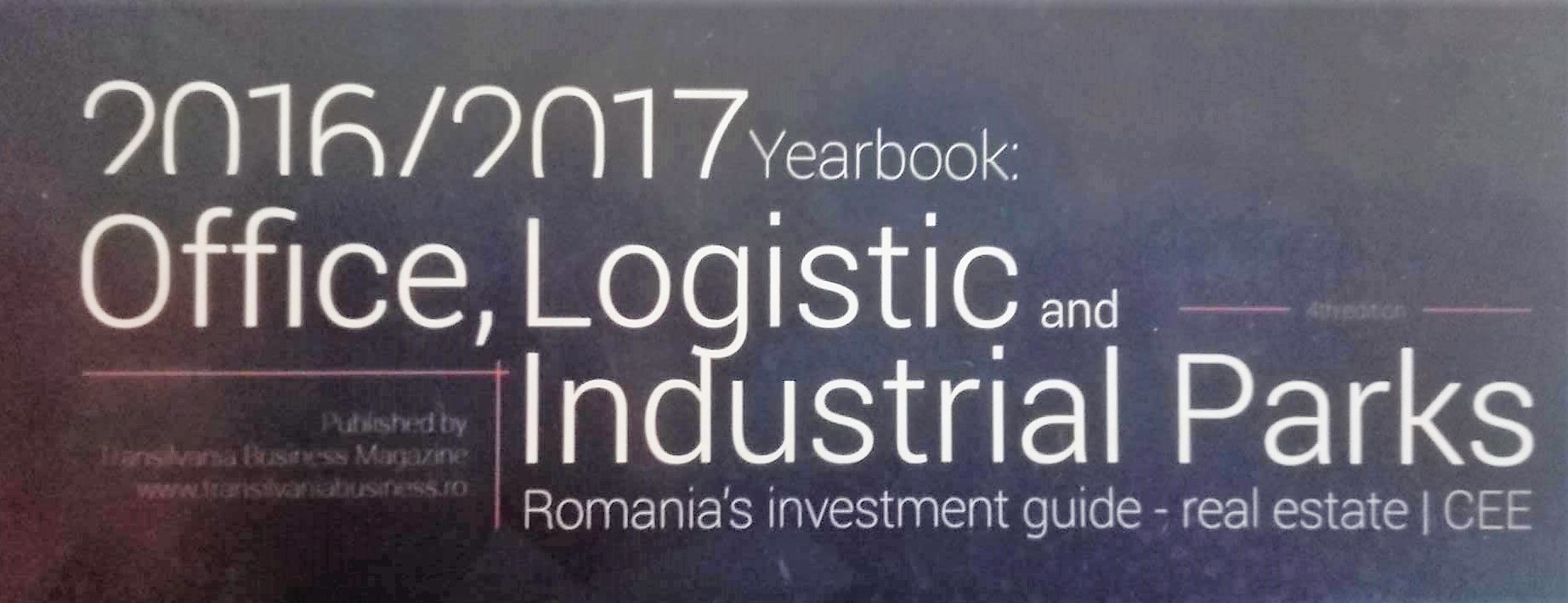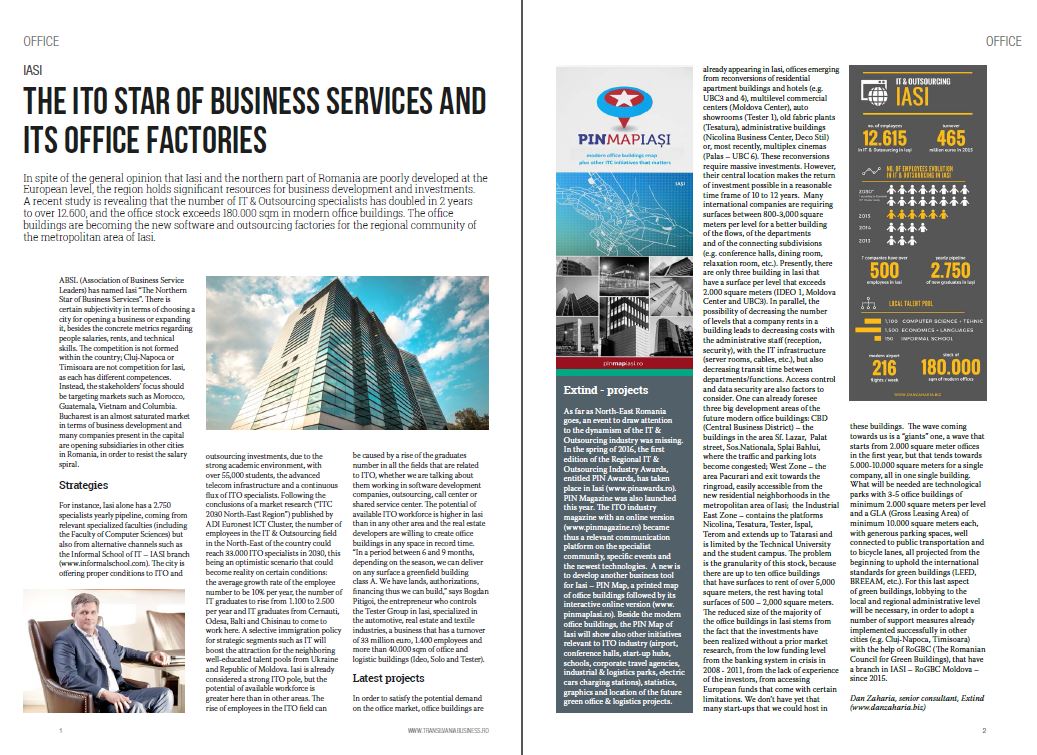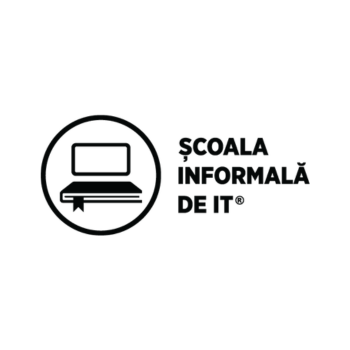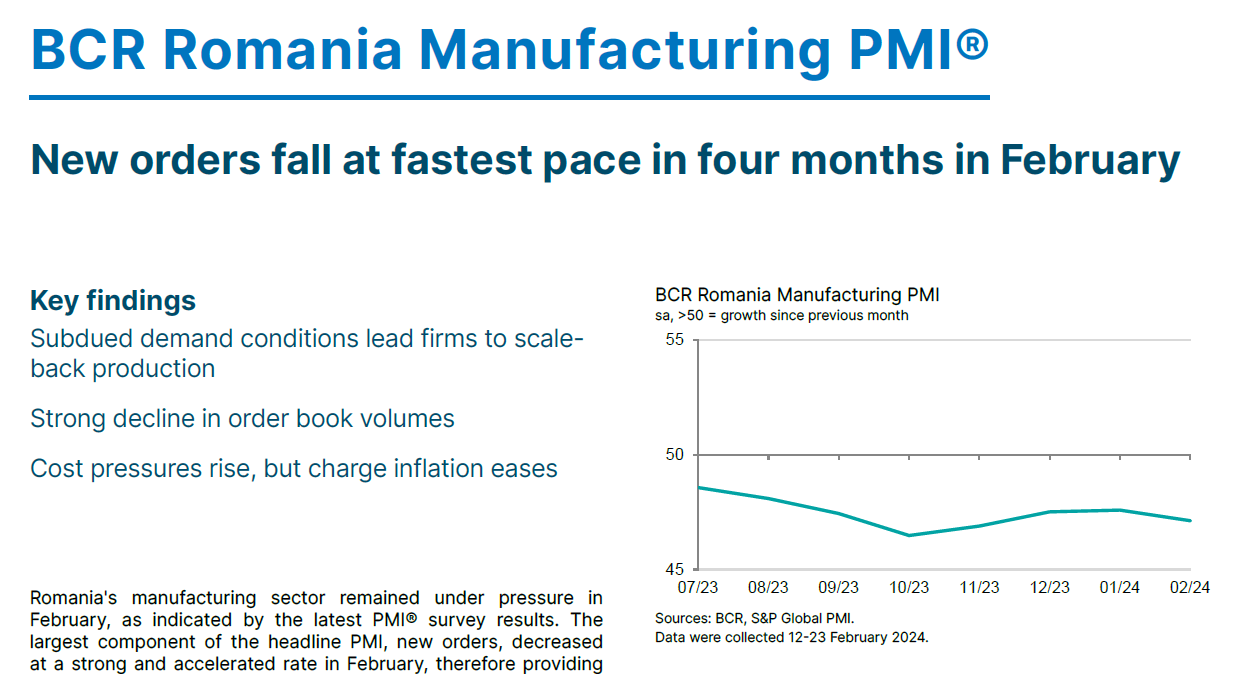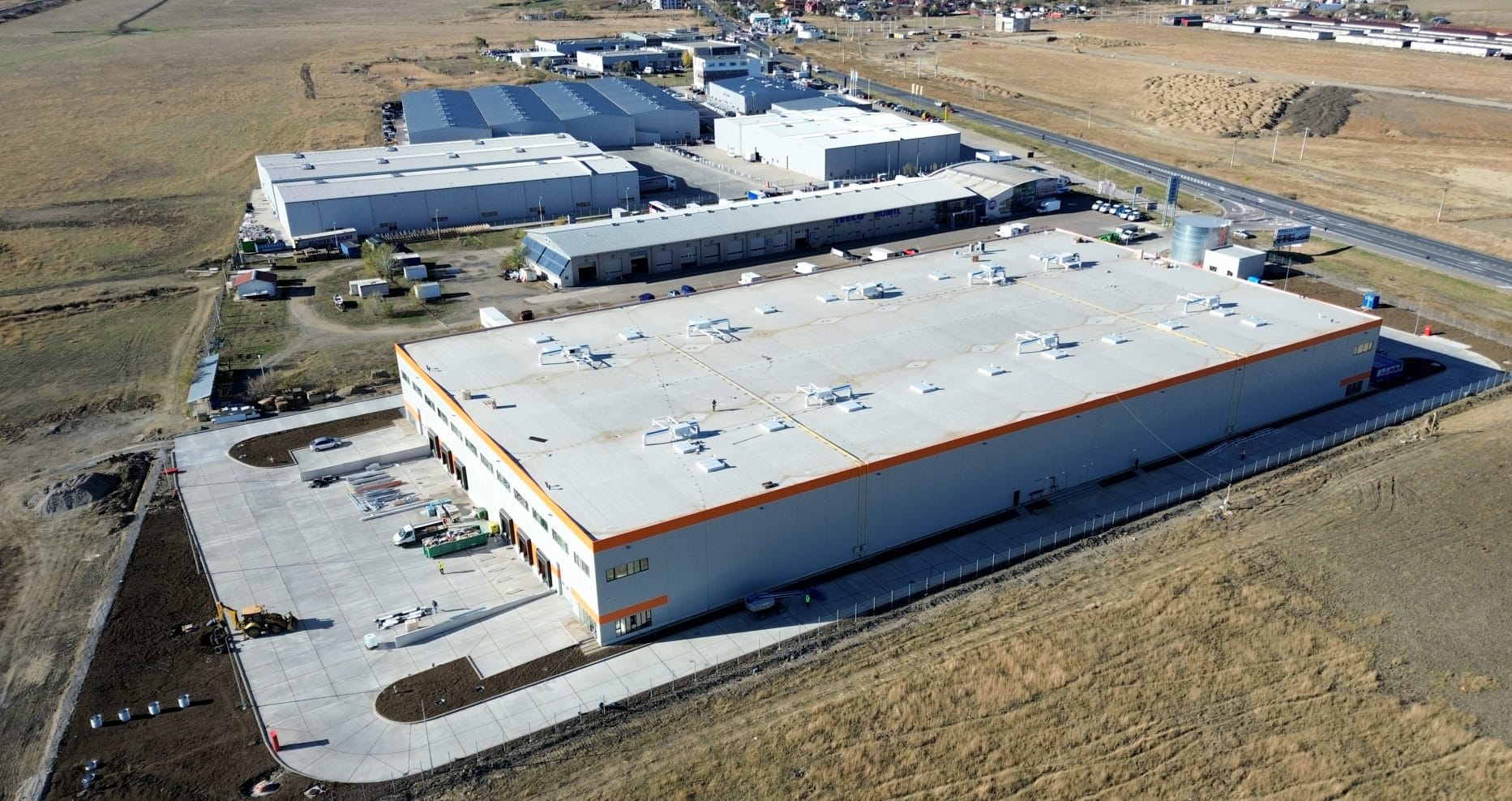Article published in the Transilvania Business Magazine 2016/2017 Yearbook for Office, Logistic and Industrial Parks.
In spite of the general opinion that IASI and the northern part of Romania is poorly developed at the European level, the region holds significant resources for business development and investments. A recent study published in Ziarul de IASI is revealing that the number of IT & Outsourcing specialists has doubled in 2 years to over 12.600, and the office stock exceeds 180.000 sq.m in modern office buildings. The office buildings are becoming the new software and outsourcing factories for the regional community of the metropolitan area of IASI.
ABSL (Association of Business Service Leaders) has named IASI as “The Northern Star of Business Services”. There is certain subjectivity in terms of choosing a city for opening a business or expanding it, besides the concrete metrics regarding people salaries, rents, and technical skills.
The competition is not formed within the country; Cluj-Napoca or Timisoara are not competition for IASI, as each has different competences. Instead, the stakeholders’ focus should be targeting markets such as Maroc, Guatemala, Vietnam and Columbia. Bucharest is an almost saturated market in terms of business development and many companies present in the capital are opening subsidiaries in other cities in Romania, in order to resist the salary spiral.
For instance, IASI alone has a 2.750 specialists yearly pipeline, coming from relevant specialized faculties (including the Faculty of Computer Sciences) but also from alternative channels such as the Informal School of IT – IASI branch (www.informalschool.com). The city is offering proper conditions to ITO and outsourcing investments, due to the strong academic environment, with over 55,000 students, the advanced telecom infrastructure and a continuous flux of ITO specialists.
Following the conclusions of a market research (“ITC 2030 North-East Region”) published by ADI Euronest ICT Cluster, the number of employees in the IT & Outsourcing field in the North-East of the country could reach 33.000 ITO specialists in 2030, this being an optimistic scenario that could become reality on certain conditions: the average growth rate of the employee number to be 10% per year, the number of IT graduates to rise from 1.100 to 2.500 per year and IT graduates from Cernăuţi, Odesa, Bălţi and Chişinău to come to work here. A selective immigration policy for strategic segments such as IT will boost the attraction for the neighbouring well-educated talent pools from Ukraine and Republic of Moldova.
IAŞI is already considered a strong ITO pole, but the potential of available workforce is greater here than in other areas. The rise of employees in the ITO field can be caused by a rise of the graduates number in all the fields that are related to ITO, whether we are talking about them working in software development companies, outsourcing, call center or shared service center.
As far as North-East Romania goes, an event to draw attention to the dynamism of the IT & Outsourcing industry was missing. In the spring of 2016, the first edition of the Regional IT & Outsourcing Industry Awards, entitled PIN Awards, has taken place in IAȘI (www.pinawards.ro). The event wishes to celebrate the development of the industry on a regional level and to highlight its positive impact on the community. The PIN Awards will be an annual event aiming to honor the established companies and firms, the innovative start-ups, the bold entrepreneurship in the region, the relevant community events, as well as sustainable projects of the academic environment.
Also, in 2016, has been launched PIN Magazine, the ITO industry magazine. With a circulation of 1.000 printed copies and an online platform (www.pinmagazine.ro), it became thus a relevant communication platform on the specialist community, specific events and the newest technologies.
A new initiative from Extind is to develop another business tool for IASI – PIN Map, a printed map of office buildings followed by its interactive online version (www.pinmapiasi.ro). Besides the modern office buildings, the PIN Map of IASI will show also other initiatives relevant to ITO industry (airport, conference halls, start-up hubs, schools, corporate travel agencies, industrial & logistics parks, electric cars charging stations), statistics, graphics and location of the future green office & logistics projects.
The potential of available ITO workforce is higher in IAȘI than in any other area and the real estate developers are willing to create office buildings in any space in record time. “In a period between 6 and 9 months, depending on the season, we can deliver on any surface a greenfield building class A. We have lands, authorizations, financing thus we can build,” says Bogdan Piţigoi, the entrepreneur who controls the TESTER company group in IAȘI, specialized in the automotive, real estate and textile industries, a business that has a turnover of 33 million euro, 1.400 employees and more than 40.000 sqm of office and logistic buildings (IDEO, SOLO and TESTER).
In order to satisfy the potential demand on the office market, office buildings are already appearing in IASI, offices emerging from reconversions of residential apartment buildings and hotels (e.g. UBC3 and 4), multistory commercial centers (Moldova Center), auto showrooms (Tester 1), old fabric plants (Tesatura), administrative buildings (Nicolina Business Center, Deco Stil) or, most recently, multiplex cinemas (Palas-UBC6). These reconversions require massive investments. However, their central location makes the return of investment possible in a reasonable time frame of 10 to 12 years.
Many international companies are requiring surfaces between 800-3000 square meters per level for a better building of the flows, of the departments and of the connecting subdivisions (e.g. conference halls, dining room, relaxation room, etc.). Presently, there are only three building in IASI that have a surface per level that exceeds 2.000 square meters (IDEO 1, Moldova Center si UBC3). In parallel, the possibility of decreasing the number of levels that a company rents in a building leads to decreasing costs with the administrative staff (reception, security), with the IT infrastructure (server rooms, cables, etc.), but also decreasing transit time between departments/functions. Access control and data security are also factors to consider.
One can already foresee three big development areas of the future modern office buildings:
- CBD (Central Business District) – the buildings in the area Sf. Lazar, Str.Palat, Sos.Nationala, Splai Bahlui, where the traffic and parking lots become congested.
- West Zone – the area Pacurari and exit towards the beltway, easily accessible from the new residential neighbourhoods in the metropolitan area of IASI.
- The Industrial East Zone – contains the platforms Nicolina, Tesatura, TESTER, ISPAL, Terom and extends up to Tatarasi and is limited by the Technical University and the student campus.
The problem is the granularity of this stock, because there are up to ten office buildings that have surfaces to rent of over 5.000 square meters, the rest having total surfaces of 500-2.000 square meters. The reduced size of the majority of the office buildings in IASI stems from the fact that the investments have been realized without a prior market research, from the low funding level from the banking system in crisis in 2008-2011, from the lack of experience of the investors, from accessing European funds that come with certain limitations. We don’t have yet that many start-ups that we could host in these buildings.
The wave coming towards us is a “giants” one, a wave that starts from 2.000 square meter offices in the first year, but that tends towards 5.000-10.000 square meters for a single company, all in one single building. What will be needed are technological parks with 3-5 office buildings of minimum 2.000 square meters per level and a GLA (Gross Leasing Area) of minimum 10.000 square meters each, with generous parking spaces, well connected to public transportation and to bicycle lanes, all projected from the beginning to uphold the international standards for green buildings (LEED, BREEAM, etc.).
For this last aspect of green buildings, lobbying to the local and regional administrative level will be necessary, in order to adopt a number of support measures already implemented successfully in other cities (e.g. Cluj-Napoca, Timisoara) with the help of RoGBC (The Romanian Council for Green Buildings), that have a branch in IASI – RoGBC Moldova – since 2015.
